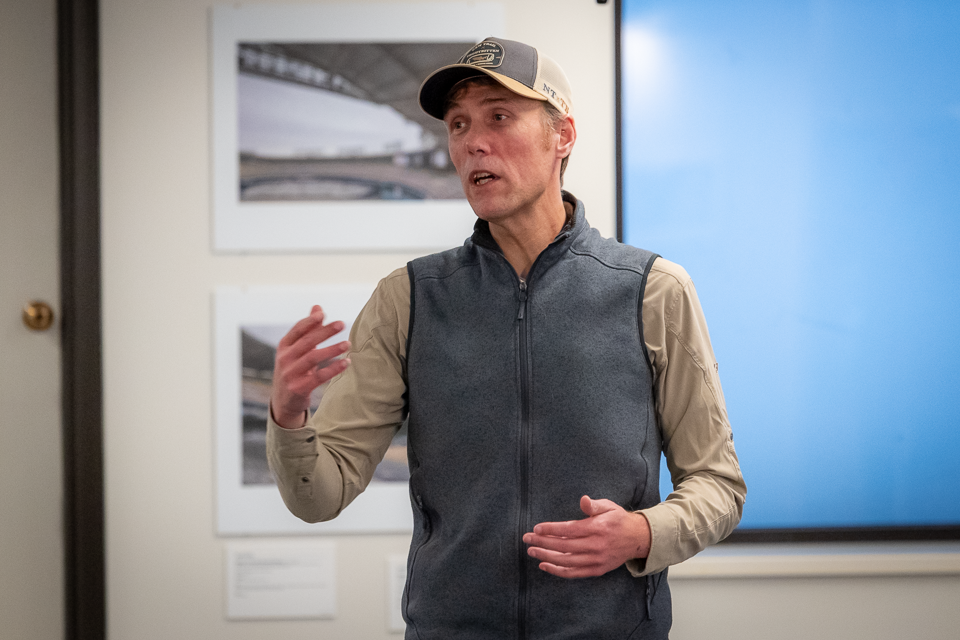
I use almost everything I Iearned at MATC every day I work. And what MATC taught me best was to be prepared for opportunity. You also learn you need to stick with it, no matter what.
While in Milwaukee Area Technical College’s well-regarded photography program, Jarob Ortiz learned about lenses and light exposure, framing, and film stock.
More importantly, he learned about preparation and persistence.
Since 2017, Ortiz has worked for the National Park Service's Heritage Documentation program, traveling the country and capturing images of buildings, structures and sites of historical significance to be preserved in the Library of Congress.
The 2013 MATC graduate said thanks to his rigorous college training, he was ready, willing and able when he was offered the job over 5,000 other applicants.
“When the park service came calling, I was set. I could speak the technical language they needed to hear. These days, places want to hear you have that technical skill.
“I use almost everything I Iearned at MATC every day I work,” he added. “And what MATC taught me best was to be prepared for opportunity. You also learn you need to stick with it, no matter what. You always need to keep learning from experience. You find that photography rewards the stubborn.”
Ortiz returned to MATC this month, visiting with current photography students and overseeing an exhibit of his work at the college’s Create Gallery at the Downtown Milwaukee Campus.
The show, called “Sparking his Future by Igniting the Past,” displays the lessons he learned attending MATC and how those experiences shaped his approach behind the lens for the past 15 years.
The gallery show features large format film and digital photography of landscapes, still life, and architecture, including Ellis Island, the now-demolished RFK Stadium near Washington, D.C., and stone train bridges.
The show can be seen 10 a.m. to 4 p.m., Monday through Friday until April 13, in the gallery, which is located on the first floor of the Main Building, 1015 N. 6th Street.
Ortiz appeared at the gallery on Friday, March 21. He talked with current students, his former MATC instructors, colleagues and friends, and answered questions about his career.
Ortiz also visited classes led by longtime photography instructor John Glembin — one of his instructors — on March 15 and March 21. Glembin said he encouraged his students to visit the gallery show.
“I think students can benefit by seeing the comparison of what he did when he was first starting and what he is doing now,” Glembin said. “They can see the background, the information and the specifications of what he was doing and how he has progressed through the years.”
Ortiz considers himself a documentarian: on his assignments, he attempts to encapsulate as much architectural data as he can in every shot. “Some of my pictures I consider art, and others I take because I have been told I have to take them,” he said with a laugh.
Ortiz gained his fascination with city architecture as a youth. His father, who was a Milwaukee police detective, took Jarob and his brother Nate to see old building sites in Milwaukee. While at MATC, Ortiz loved to photograph the ruins of abandoned steel mills and manufacturing sites using a large format view camera.
“He was a hungry kid,” Glembin said in an article about Ortiz in MATC’s Fall 2018 edition of Transformations Magazine. “He always wanted to learn more, to perfect his skills. He was constantly calling to see if he could squeeze in extra time in the lab. He was meticulous.”
Ortiz works more than 60 hours a week, documenting scenes before they are lost to history. “I consider this a service to my country,” he said “I'm recording this so future generations can see what we had at this time. Every photograph is a reference for the future. My legacy is in the work and what I leave behind. No amount of money could substitute for the feeling I get doing this work.”
Learn about MATC’s Photography program
About MATC: Wisconsin’s largest technical college and one of the most diverse two-year institutions in the Midwest, Milwaukee Area Technical College is a key driver of southeastern Wisconsin’s economy and has provided innovative education in the region since 1912. More than 30,000 students per year attend the college’s four campuses and community-based sites or learn online. MATC offers affordable and accessible education and training opportunities that empower and transform lives in the community. The college offers more than 180 academic programs — many that prepare students for jobs immediately upon completion and others that provide transfer options leading to bachelor’s degrees with more than 40 four-year colleges and universities. Overwhelmingly, MATC graduates build careers and businesses in southeastern Wisconsin. The college is accredited by the Higher Learning Commission.

